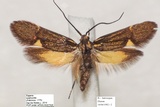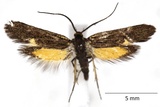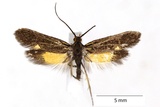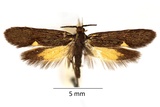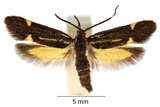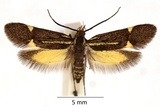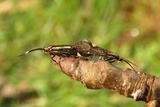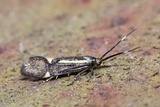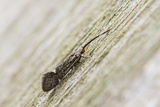Esperia sulphurella (Fabricius, 1775) Species
Last modified: April 8, 2025, 4:15 p.m.
A common species in the northern part of Belgium, not so common in the south.
Details
- Classification
- Family: Oecophoridae > Subfamily: Oecophorinae > Genus: Esperia > Species: Esperia sulphurella
- Vernacular names
- Esperiamot (NL), Schwefelgelber Totholzfalter (DE)
- Synonyms
- Esperia orbonella (Hübner, 1813)
- First mention in Belgium
- De Sélys-Longchamps E. 1844. Énumération des insectes Lépidoptères de la Belgique. — Mémoires de la Société royale des Sciences de Liége 2: 1–35. On page 25 (as Stenoptera orbonella H.). view page
- Status
-
Native
Distribution
Egg
Pearly white, oblong-ovate.
Caterpillar
Whitish to grey; head capsule and prothoracic plate chestnut-brown; last abdominal segment brown.
Cocoon/pupa
Pale yellowish brown in a tough silken cocoon.
Bionomics
The eggs are oviposited singly or up to three in crevices in dead bark and covered with perianal hairs.
The caterpillars construct silken tubes containing frass and feed from these tubes from June–July, hibernating from January to April. The duration of the larval stage depends much on the mildness or severity of the winter.
Pupation takes place in the larval feeding place from January till May
The adults are active, especially during morning sunshine near the breeding sites. Sometimes assembling in larger numbers when females are present. They occasionally come to light.
Flight periods
One generation a year from the end of April till June.
Habitat
Woodland, gardens, parks, old hedgerows where dead wood is present.
